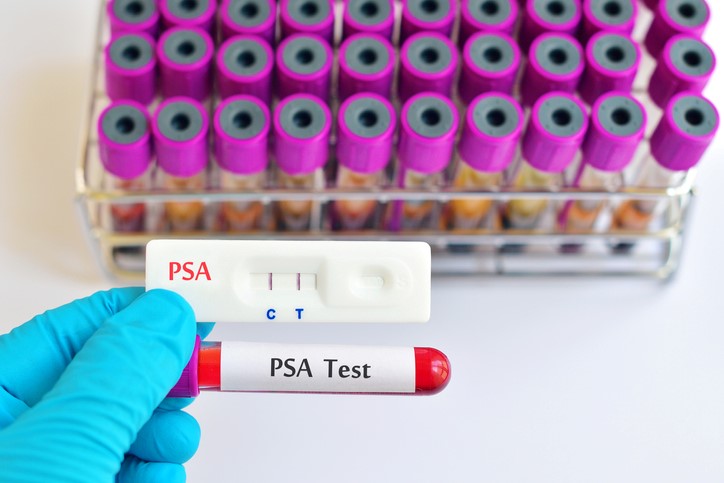The prostate is a gland in men located in the pelvis. It sits below the urinary bladder and surrounds the urethra. The prostate is responsible for producing seminal fluid which mixes with sperm produced by the testicles. The prostate is also a muscle which acts to ensure semen is forcibly pressed into the urethra and emitted during ejaculation as part of the male sexual response.
Symptoms of prostate problems include frequent urge to urinate, need to get up many times during the night to urinate, blood in urine or semen, pain or burning with urination, painful ejaculation, dribbling or leaking urine, and pain or stiffness in the lower back, hips, pelvic or rectal area.
Disorders of the prostate include inflammation, enlargement and cancer:
Inflamed Prostate – Prostatitis is inflammation of the prostate gland. It most often is cause by infection with bacteria. Inflammation of the prostate can cause painful urination or ejaculation, groin pain, difficulty passing urine or may cause fever or fatigue. When inflamed, the prostate becomes enlarge and is tender when touched during rectal examination by your doctor.
Enlarged Prostate – An enlarged prostate is called prostatomegaly, with benign prostatic hyperplasia (BPH) being the most common cause. BPH refers to an enlargement of the prostate due to an increase in the number of cells that make up the prostate from a cause that is not a malignancy. It is very common in older men. It is often diagnosed when the prostate has enlarged to the point where urination becomes difficult. Symptoms include needing to urinate often (urinary frequency) or taking a while to get started (urinary hesitancy). If the prostate grows too large, it may constrict the urethra and impede the flow of urine, making urination painful and difficult.
BPH can be treated with medication, a minimally invasive procedure or, in extreme cases, surgery that removes the prostate. In general, treatment often begins with medication, which reduces the tone of the smooth muscle found in the urethra that passes through the prostate, making it easier for urine to pass through. For people with persistent symptoms, procedures may be considered. The surgery most often used in such cases is a transurethral resection of the prostate, in which an instrument is inserted through the urethra to remove prostate tissue that is pressing against the upper part of the urethra and restricting the flow of urine. Minimally invasive procedures include transurethral needle ablation of the prostate and may be followed by placement of a stent to allow for normal voluntary urination.
Cancer – Prostate cancer is one of the most common cancers affecting older men (men 50 and older are at greater risk for developing prostate cancer) and a significant cause of death for elderly men worldwide. Often, a person does not have symptoms; when they do occur, symptoms may include urinary frequency, urgency, hesitation and other symptoms associated with BPH (benign prostatic hyperplasia). Uncommonly, such cancers may cause weight loss, retention of urine, or symptoms such as back pain due to metastatic lesions that have spread outside of the prostate.
A digital rectal examination and the measurement of a prostate-specific antigen (PSA) level are usually the first screening investigations done to check for prostate cancer. The next form of testing is often the taking of a biopsy to assess for tumor activity and invasiveness. If a tumor is confirmed, medical imaging such as a CAT scan or MRI or bone scan may be done to check for the presence of tumor metastases in other parts of the body.
Prostate cancer that is only present in the prostate is often treated with either surgical removal of the prostate or with radiotherapy. Cancer that has spread to other parts of the body is usually treated also with hormone therapy, to deprive a tumor of hormones that stimulate proliferation. Cancer that does not respond to hormonal treatment, or that progresses after treatment, might be treated with chemotherapy.
If you are experiencing symptoms of prostate cancer, your physician should order blood studies, including a value of your PSA level. Generally, PSA levels of 4.0 ng/ml and lower is considered normal. If your PSA level is greater than 4.0 ng/ml, your doctor may have you repeat the PSA blood test again within a short period of time and/or may have you undergo a biopsy of the prostate.
Sanocki Newman & Turret, LLP has successfully litigated cases where physicians were negligent in the care and treatment of their patients in failing to perform a prostate cancer screening; in ignoring the results of PSA testing performed; in failing to perform repeat PSA testing; in failing to refer the patient to proper specialists; in failing to timely refer the patient to a urologist and/or oncologist; in failing to rule out prostate cancer; in failing to diagnose prostate cancer; in misdiagnosing the patient as suffering from inflammatory disease of the prostate; in diagnosing the patient as suffering from inflammatory disease of the prostate, without ruling out prostate cancer; and in delaying the patient’s care and treatment.
As a result of a doctor’s negligence in caring for our clients, they have been caused to suffer progression of their cancer, spread (metastasis) of cancer outside the prostate including to other organs which could require treatment with radiation and/or chemotherapy. Some of our clients unfortunately have had their life expectancy diminished.
The law firm of Sanocki Newman & Turret, LLP has been successful in litigating personal injury and medical malpractice case involving the failure to timely diagnose and treat prostate cancer. If you have sustained an injury following the failure to diagnose and treat prostate cancer you may be the victim of medical malpractice. Contact Sanocki Newman & Turret, so that we can evaluate your potential medical malpractice lawsuit. You can call us at (212) 962-1190 or email us at info@sntlawfirm.com.


